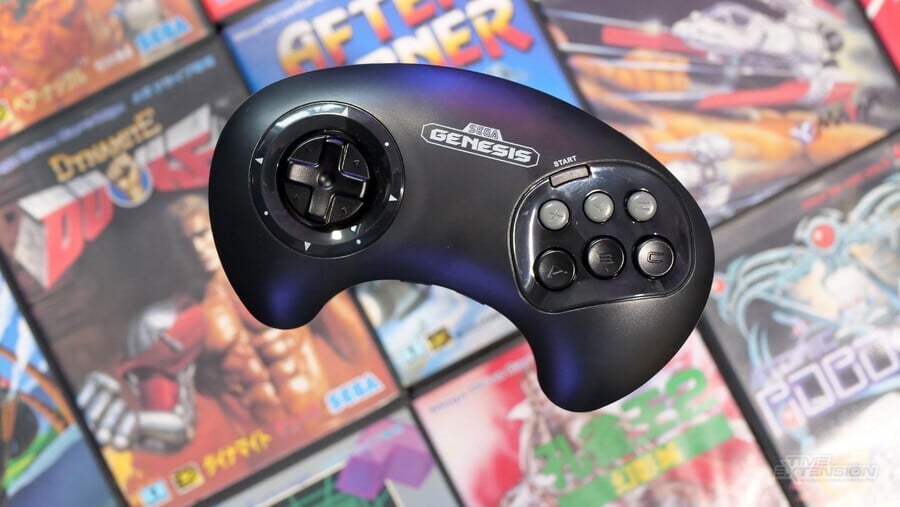
The original Genesis / Mega Drive launched in Japan in 1988 alongside what was, for the time, a pretty revolutionary controller. Pads for the NES / Famicom, Master System and PC Engine had all followed largely the same template – an oblong-shaped controller with two action buttons.
What Sega offered with its 16-bit system was a more ergonomic experience; the MK-1650 pad was rounded so it sat more comfortably in the hands, while the two small 'prongs' at the bottom enhanced grip. Furthermore, Sega added a third action button, opening up plenty of gameplay possibilities.
However, Sega's achievement was overshadowed by the release of Nintendo's SNES / Super Famicom two years later. It also boasted an ergonomic design, with the added bonus of four face buttons and two shoulder triggers. This configuration not only gave developers more input options to play with, but it also unwittingly made the SNES the perfect console to host Capcom's Street Fighter II, which uses a six-button setup.
Not to be outdone, Sega released a revised controller for its console to coincide with its own port of Street Fighter II. The Genesis / Mega Drive 6-button pad is widely considered by many fans to be the best for the console (and one of the greatest pads of all time), but there are some who disagree; while the 6-button pad is naturally superior for those games which make use of the extra action buttons, it's smaller and therefore not ideal for those players with larger hands.
Thankfully, these same people can now rest easy, as Retro-Bit has created the 'Big 6' – an officially-licenced Genesis / Mega Drive pad which uses the original controller's design but adds in three extra face buttons, giving it parity with the 6-button pad.
The Big 6 comes in two flavours – one is wired (MSRP: $16.99) and designed to work with original hardware only (there's also a wired USB variant, which costs $19.99). The other is a 2.4GHz wireless edition (MSRP: $34.99) that can work with original hardware and your Switch or PC, thanks to the inclusion of two wireless dongles in the box. The wireless option has an internal rechargeable battery that is topped up using a USB-C cable and comes with 'Home' and 'Screenshot' buttons on the bottom edge, as well as L and R triggers (the wired pad has the Mega Drive-specific 'Mode' button where the R shoulder button would be).
In terms of design, the Big 6 is going to win over a lot of old-school Sega fans who prefer the size and heft of the Mk1 joypad. It's an exact match in terms of feel, but Retro-Fit has made some changes, beyond those additional three buttons. The D-pad is based on the design used on the 6-button controller; that is to say, its edges are more rounded, making it less punishing on your digits. This was always our one key complaint with the original 3-button controller, so we're pleased to see it remedied here.
Less welcome is the placement of the 'Start' button directly above the six action buttons. On the original controller, it was in more or less the same place, but the addition of three additional buttons has forced a rethink from Retro-Bit's design team. We found it a little hard to press due to the fact that it's heavily recessed into the bodywork of the pad. Some of you might actually prefer the placement, but we'd liked to have seen it slap-bang in the middle, just like it is on the original six-button controller – after decades of using that particular pad, our muscle memory is too entrenched for us to imagine it being anywhere else, if we're honest.
Outside of this, there's little to complain about here. The wired pad has a massive 3-meter cable which means you don't have to sit right in front of your television, while the wireless version performs admirably; we've especially liked using it for retro gaming on our Switch.
